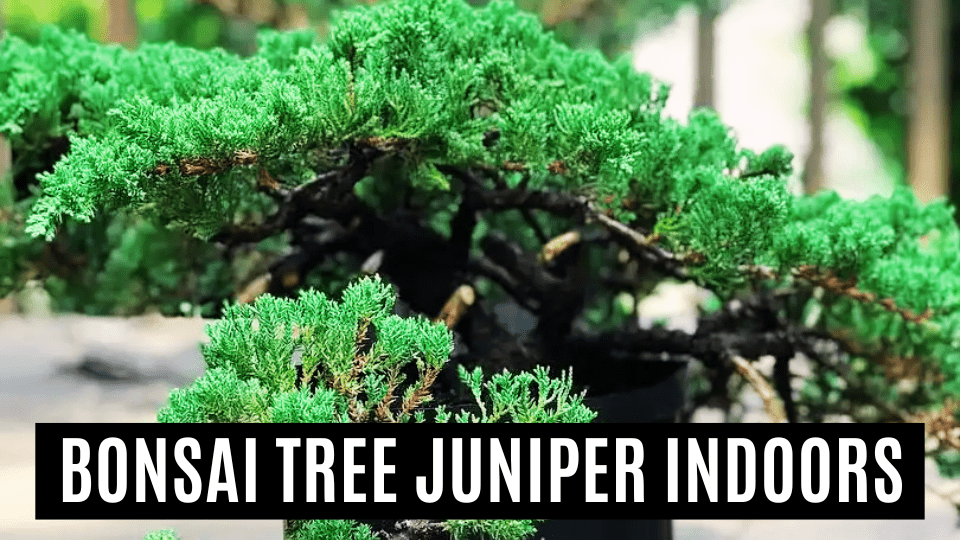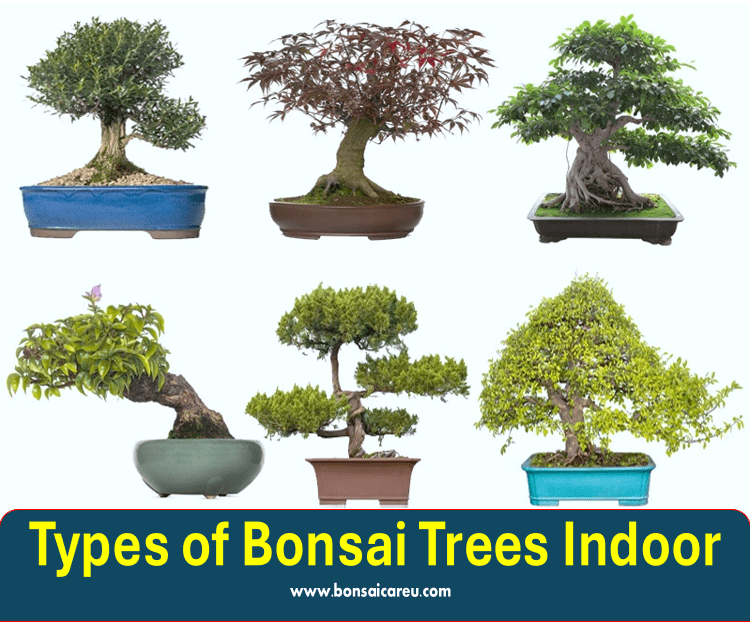Exquisite Bonsai Tree Juniper Indoors environments and will not thrive indoors. Although junipers are commonly outdoor plants, they can also be grown as prized bonsai specimens indoors.
With their trailing blue-green foliage, Dwarf Japanese Garden Junipers are highly prized as indoor bonsai specimens. It’s important to understand the care requirements and limitations of growing a juniper bonsai indoors to ensure its health and longevity. Proper watering, sunlight exposure, and soil conditions are crucial factors in maintaining a thriving indoor juniper bonsai.
Understanding the specific needs of juniper bonsai trees will help you create an ideal environment for their growth and ensure they remain healthy and vibrant.

Exquisite Bonsai Tree Juniper Indoors
Juniper bonsai trees are popular for indoor cultivation due to their elegant appearance and ease of care. These miniature trees bring the beauty of nature into your home and are ideal for beginners and experienced bonsai enthusiasts alike.
The Allure Of Juniper Bonsai
Juniper bonsai trees captivate with their exquisite foliage and intriguing shapes, adding a touch of tranquility and natural charm to any indoor space. Their unique aesthetic appeal and the sense of serenity they evoke make them a sought-after choice for bonsai enthusiasts.
Myths About Indoor Juniper Bonsai
There are misconceptions surrounding the suitability of juniper bonsai for indoor environments. Contrary to popular belief, juniper bonsai can thrive indoors with proper care and attention, dispelling the myth that they are exclusively outdoor plants.
Selecting Your Indoor Juniper Bonsai
If you want to add a touch of nature and tranquility to your indoor space, a Juniper Bonsai tree is a perfect choice. These miniature trees are known for their beautiful foliage and unique form, making them ideal additions to any home or office.
Traits Of A Healthy Juniper Bonsai
When selecting an indoor Juniper Bonsai, it’s important to look for certain traits that indicate a healthy tree. Here are some key characteristics to keep in mind:
- Strong and vibrant foliage: A healthy Juniper Bonsai should have lush green foliage showing no discoloration or wilting.
- Well-developed root system: Check the bonsai’s root system to ensure it is well-established and evenly distributed throughout the soil.
- Compact and balanced shape: Look for a bonsai that has a well-proportioned shape, with branches and foliage evenly distributed.
- No signs of pests or diseases: Inspect the tree carefully for signs of pests, such as webs or holes in the foliage, and signs of diseases, like rot or mold.
Where To Purchase
When it comes to purchasing an indoor Juniper Bonsai, there are several options available. Here are some reputable sources where you can find high-quality bonsai trees:
| Online Retailers | Price Range |
| Eastern Leaf | $35.00 |
| Amazon.com | $21.99 – $54.99 |
| Etsy | $19.98 |
| Jackson & Perkins | $79.95 |
| Plants.com | $54.99 |
It’s important to choose a reputable seller specializing in bonsai trees and provide detailed information about the tree’s care and maintenance. This will ensure that you receive a healthy and well-cared-for bonsai.
Remember, selecting the right indoor Juniper Bonsai is the first step toward creating a peaceful and harmonious environment in your home or office. Take your time to find the perfect tree that matches your preferences and complements your indoor space.
Optimal Environmental Conditions
To ensure the optimal growth of a Bonsai Tree Juniper indoors, it is essential to provide ample sunlight, proper watering, and well-draining soil. Indoor temperature and humidity levels must mimic the tree’s natural outdoor environment to promote healthy development. Regular pruning and fertilization are crucial for maintaining the tree’s compact and elegant form.
Sunlight Requirements
Place the Juniper Bonsai tree indoors in a spot that receives ample sunlight.
Temperature And Humidity Control
Maintain a temperature between 60-70°F and humidity levels around 50-70%.
Watering And Feeding
Proper watering and feeding are essential for the health and longevity of your indoor Juniper Bonsai tree. In this section, we will discuss how to determine your bonsai’s watering needs and choose the right fertilizer to ensure its growth and vitality.
Determining Watering Needs
Watering your Juniper Bonsai tree requires careful attention to its specific needs. The amount and frequency of watering will depend on various factors, such as the size of the tree, the type of soil, and the environmental conditions in your home.
You can use the finger test to determine when to water your bonsai. Insert your index finger about an inch into the soil. If it feels dry, it’s time to water. However, if it feels moist, it’s best to wait before watering again to avoid overwatering, which can lead to root rot.
Another important aspect to consider is the watering technique. It’s recommended to water your Juniper Bonsai thoroughly until the water drains out from the bottom of the pot. This ensures that the entire root system receives adequate moisture.
Choosing The Right Fertilizer
Fertilizing your Juniper Bonsai tree is crucial to providing the nutrients for healthy growth. When choosing a fertilizer, opt for one specifically formulated for bonsai trees.
Various types of bonsai fertilizers are available, including organic and inorganic options. Organic fertilizers are derived from natural sources and release nutrients slowly over time, while inorganic fertilizers contain synthetic compounds and provide a more immediate nutrient boost.
It’s important to follow the manufacturer’s instructions regarding the dosage and frequency of fertilization. Generally, fertilizing your Juniper Bonsai tree every two to four weeks during the growing season (spring and summer) is recommended. However, it’s crucial to adjust the frequency based on your tree’s specific needs.
Remember to always water your bonsai before applying fertilizer to prevent root burn. Additionally, avoid fertilizing during the dormant period (fall and winter) when your Juniper Bonsai tree requires less nutrients.
By paying close attention to your Juniper Bonsai tree’s watering needs and providing it with the right fertilizer, you can ensure its health and promote its growth and overall beauty.
Pruning And Shaping
Regular pruning and shaping are essential to maintaining a healthy and beautiful bonsai tree juniper indoors. These techniques help control the tree’s growth, encourage new growth in desired areas, and create an aesthetically pleasing appearance. Proper pruning and shaping also contribute to the overall health and longevity of the Bonsai tree.
Pruning and shaping are two essential techniques for maintaining the health and beauty of your indoor Juniper Bonsai Tree. Basic pruning techniques involve removing dead, damaged, or diseased branches to promote new growth and prevent further damage. It’s important to use sharp and clean tools to make precise cuts and avoid damaging the remaining healthy branches. When pruning, leave a small amount of the branch collar, which is the swollen area at the branch’s base, to promote healing and prevent infection. Advanced shaping techniques involve wiring and trimming to create a specific design or shape.
Wiring is the process of wrapping wire around the trunk and branches of the tree to bend them into the desired shape. It’s important to use a soft and flexible wire to avoid damaging the tree and remove it once the branch is set in place. Trimming involves cutting back the new growth to maintain the shape and size of the tree. It’s important to trim regularly to prevent the tree from becoming too dense and to promote new growth. To ensure the health and beauty of your Juniper Bonsai Tree, it’s important to follow proper pruning and shaping techniques.
Using basic pruning techniques to remove dead or damaged branches and advanced shaping techniques like wiring and trimming, you can create a unique and beautiful indoor bonsai tree that will thrive for years. Remember always to use sharp and clean tools and to follow proper wiring and trimming techniques to promote healthy growth and prevent damage to your tree.
Common Issues And Troubleshooting
Troubleshooting common issues with Juniper Bonsai Trees indoors is crucial for their health. Proper care, including watering, pruning, and sunlight exposure, can help these evergreens thrive indoors. Remember, Junipers are not typically indoor trees, so extra attention is needed for their well-being.
Signs Of Stress Or Illness
Yellowing leaves, browning tips, or dropping needles are signs of stress or illness.
- Yellowing leaves
- Browning tips
- Dropping needles
Addressing Pests And Diseases
To address pests and diseases:
- Inspect the tree regularly for pests.
- Treat infestations promptly with appropriate insecticides.
- Prune affected areas to prevent the spread of diseases.
Frequently Asked Questions
Can A Juniper Bonsai Survive Indoors?
No, juniper bonsai trees are outdoor plants and cannot survive indoors. They need full sunlight year-round and cannot thrive in an indoor environment. Other bonsai trees, however, like the Dwarf jade, Fukien tea, Hawaiian umbrella, and Sweet plum, can be grown indoors if cared for properly.
Is It Ok To Keep A Bonsai Tree Indoors?
Yes, it is possible to keep a bonsai tree indoors. However, it is important to note that not all bonsai trees are suitable for indoor conditions. Evergreen trees like juniper, pine, and spruce may not thrive indoors. It is recommended to choose bonsai tree species specifically suited for indoor environments, such as the Dwarf jade, Fukien tea, Hawaiian umbrella, or Sweet Plum.
Proper care and attention are necessary for the bonsai tree to thrive indoors.
Can A Juniper Be An Indoor Plant?
Junipers are outdoor plants and do not thrive indoors. They need full sunlight year-round to survive.
How Often Should I Water An Indoor Juniper Bonsai?
The watering frequency for indoor juniper bonsai depends on various factors, such as humidity, temperature, and soil moisture. As a general guideline, check the soil’s moisture level every 2-3 days. Water the bonsai when the top inch of soil feels slightly dry.
Ensure thorough watering, allowing water to drain out of the drainage holes. Avoid overwatering, as it can lead to root rot. Observe the tree’s response and adjust the watering schedule accordingly. Remember, each bonsai has unique needs, so monitor the tree closely for signs of underwatering or overwatering.
Can A Juniper Bonsai Tree Grow Indoors?
While many bonsai trees will not thrive indoors, the Dwarf Japanese Garden Juniper is a popular bonsai specimen that can be grown indoors.
Is It Possible To Keep A Juniper Bonsai Tree Indoors?
Yes, you can keep a Dwarf Japanese Garden Juniper bonsai tree indoors. However, it requires proper care and attention to thrive.
Conclusion
Growing a Juniper Bonsai indoors requires proper care and attention. Remember, Junipers thrive best outdoors due to their need for full sunlight. While they can be grown indoors as bonsai, they are not ideal for indoor environments long-term. Ensure adequate light and follow care guidelines for a healthy Juniper Bonsai.


